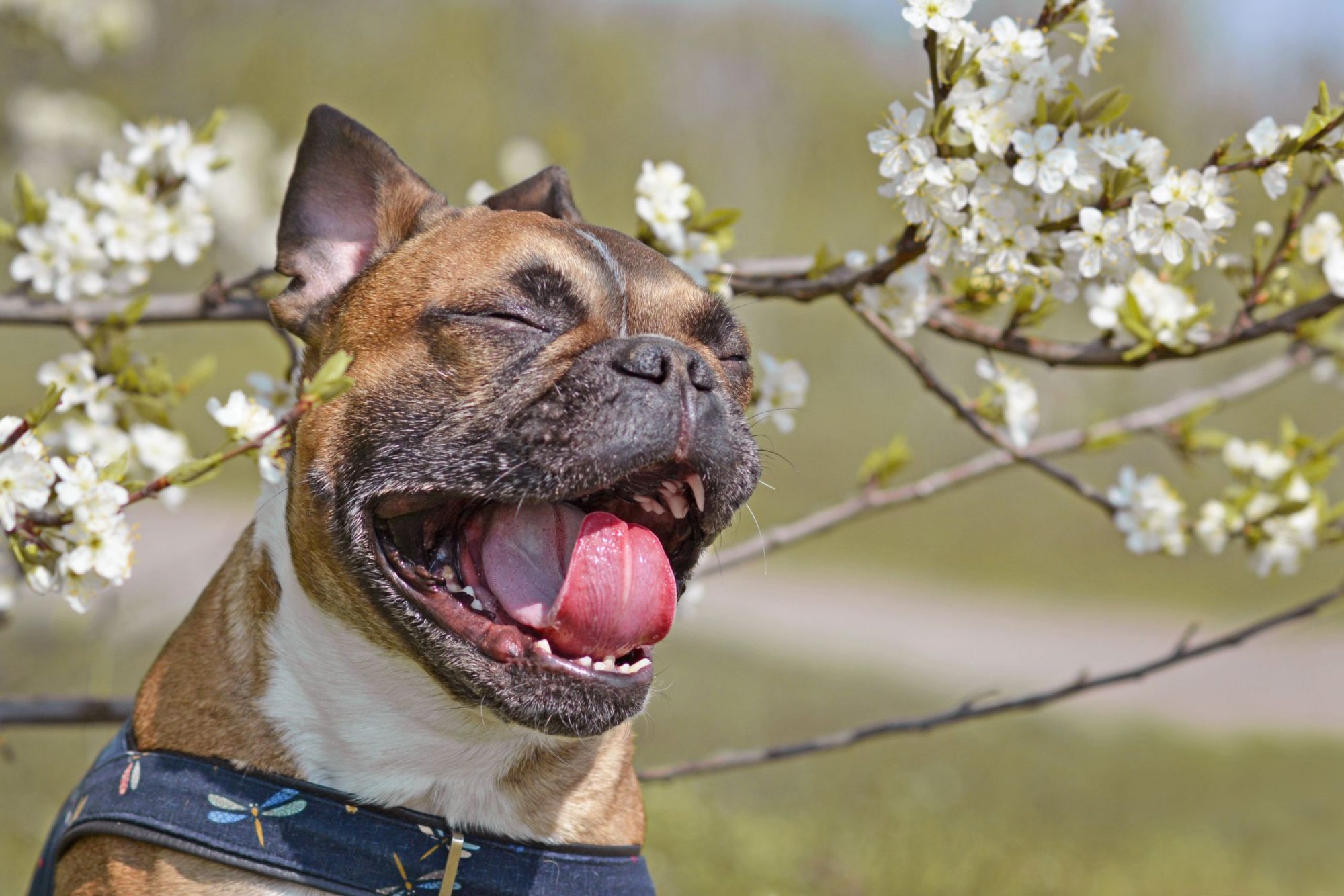What is Reverse Sneezing?

Most dog owners have witnessed an occasional bout of reverse sneezing, officially known as paroxysmal respiration. It’s a fairly common phenomenon in dogs, particularly for miniature and brachycephalic breeds. The unmistakable dog honking sound that accompanies a reverse sneeze is far from an ordinary “achoo,” and often catches pet parents off guard. We understand that it can be alarming to hear your dog honking, but most of the time, reverse sneezing is just a normal part of parenting pooches.
At East Sacramento Veterinary Center, we’re here to help you understand why your dog reverse sneezes, and how to know when to call the veterinarian.
What Happens During a Reverse Sneeze?
Reverse sneezing happens when a dog suddenly and forcefully inhales through his nose. It’s a completely reflexive action in response to a physical or environmental irritant. Most dogs will stiffen their postures and stretch out their necks in the midst of a reverse sneezing episode. Your dog’s eyes might even bulge a bit, and his chest might expand. These spasm-like outbursts often occur in clusters and might persist for a day or two.
What Causes Reverse Sneezing?
A variety of common irritants and inflammation triggers can cause your dog to reverse sneeze, including the following:
- Pulling on the leash
- Overexcitement or exercise
- Dust mites
- A foreign body (such as grass) in the airway
- Smoke, air fresheners, and other airway irritants
- Seasonal allergens like pollens and grasses
- Post-nasal drip
- Eating or drinking too fast
- Nasal mites
- Environmental toxins like household cleaners
- Bacteria or viruses
When to Call the Vet
If your dog’s bouts of reverse sneezing are infrequent and resolve themselves, you most likely don’t have anything to worry about. If you’re ever in doubt, do not hesitate to contact us. And if the reverse sneezing is accompanied by other symptoms, schedule a full examination right away. Your dog could have an underlying infection, illness, or an anatomical malformation. Watch for these warning signs:
- Fever
- Nasal discharge or mouth discharge
- Lethargy
- Changes in behavior
- No appetite
- Labored breathing
- Vomiting or retching
We should note that reverse sneezing is extremely rare in cats, so if you have a cat who suddenly starts reverse sneezing, a trip to the vet is warranted.
Treatment for Reverse Sneezes
Gently rubbing the base of your dog’s throat when he’s in the midst of a reverse sneeze can help soothe him and loosen up the spasm.
If your dog’s reverse sneezing seems chronic, a thorough examination coupled with diagnostic testing can help us uncover the cause and create a treatment plan. Your dog might need a little help getting his pet allergies or inflammation under control.
Please contact us if you have any concerns about your dog’s reverse sneezing or to schedule a visit with us. We’re here to help!
